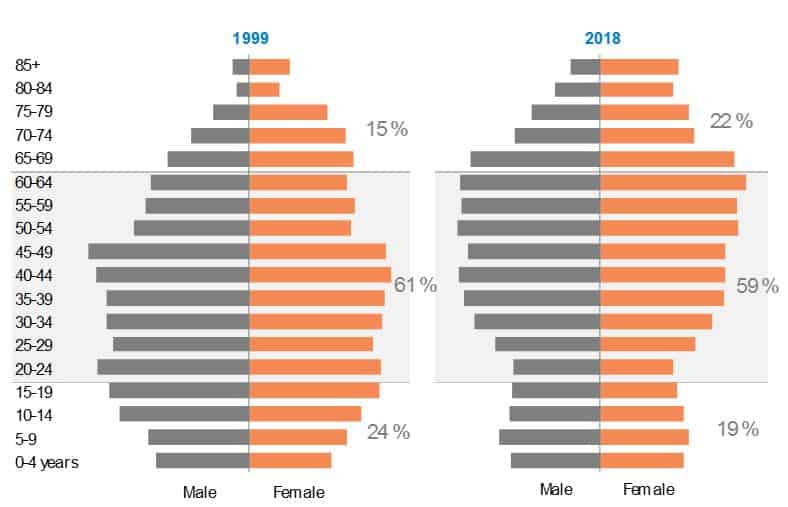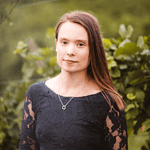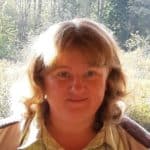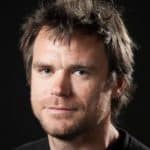During the pandemic, access to healthcare has been limited and we have been forced to become more isolated. Under these conditions, how can we help older people to live independent lives and play an active role in our communities?
Written by Monika Robnik1, Andreja Mezinec1, Ria Jagodic1, Luka Kronegger2 and Mojca Gabrijelčič Blenkuš1
The outbreak of COVID-19 has significantly affected all aspects of life across Europe. Beside threatening our health, the pandemic also poses serious challenges to our socioeconomic systems. Persisting health inequalities in our societies have been exposed. This pandemic will have the heaviest impact on the lives of people living in deprivation or facing difficult socioeconomic circumstances. We are especially concerned about how the older people in socially and economically challenging situations are affected. We should also not neglect cultural and healthcare aspects which help the older population to live independently and to actively be involved in society.
The COVID-19 pandemic, like other disasters, undermines older people´s capacity and chances of survival as a result especially of emergency-induced mental health and psychological problems, and the breakdown in services for preventing and treating chronic conditions and for providing social support. Furthermore, maintaining relationships is often identified by older people as central to their wellbeing, but social distancing has transformed the lives of everyone in society and has changed relationships and personal contact as well. In addition, loneliness and social isolation may impact health. The advice to avoid activities in public has decreased mobility and physical activity among older people, which might cause premature sarcopenia, prefrailty, and frailty. Such developments sadly decline self-dependency of older people. The current pandemic is especially unfavourable for the health and wellbeing of older people in rural areas.
Here, we set out how the COVID-19 pandemic affects older people in remote areas specifically. It is not our intention to provide a complete overview – instead, our goal is to raise awareness by presenting some findings on particular questions regarding ageing in remote areas in general, but that could be used to create an informed response to the current situation as well.
Does COVID-19 affect all older people equally? What is the situation in in remote areas?
During the COVID-19 pandemic, some groups have been affected more than others such as those already socially isolated, people in poor health, or those living in low-income communities. Poorer communities have been hit hard by cuts in public services and the loss of social infrastructure (social clubs, day care centres, libraries, etc.). Social isolation in later life is determined both by characteristics of the local neighbourhood and by an individual’s own personal attributes. Living in a deprived area, in both urban and rural settings, is associated with increased levels of exclusion. Social exclusion in later life is associated with a range of adverse health and wellbeing outcomes, including possible worsening long-term illness, disability, psychological distress, lower quality of life, unmet social care needs, and increased risk of loneliness. Characteristics of rural areas such as lower population density and more geographically dispersed populations, make it more difficult and expensive to create and maintain a comprehensive service infrastructure as common in urban areas.
Beside the consequences that were already mentioned, older people face significant risk of developing severe illness if they contract COVID-19 due to physiological changes that come with ageing and potential underlying health conditions. Older people in rural areas are also economically at risk: They live in areas with higher poverty rates and lower rates of insurance coverage, further exacerbating inequalities.
Ageing in remote areas – stakeholders’ opinions

The Slovenian Alps are a remote area in Slovenia that is a very important living space for many people. Slovenia, like the rest of Europe, has an aging population which is a big challenge for all. In Figure 1 the population pyramid of individual municipalities of the Alpine region of Slovenia is presented for the years 1999 and 2018. It shows us that the population of the Slovenian Alps is ageing.
In response to Slovenia’s ageing population, the national government adopted the Active Ageing Strategy in 2017. It provides answers to demographic challenges facing our society today and even more in the future. In 2018, NIJZ started participating in the INTERREG Alpine Space Transnational Governance of Active and Healthy Ageing (ASTAHG) project. ASTAHG connects five Alpine countries. Its overall objective is to innovate public policies dedicated to active ageing of the Alpine Space population by improving public authorities’ capacity to “coordinate efforts from different sectors and at different levels to respond with tailored initiatives to alpine territorial needs”. In order to meet the population needs, ASTAHG identified 7 domains (healthcare, long-term care, social care, independent living, wellbeing, tourism, mobility, and transport) that serve as its core focus. Over the past year, NIJZ has dedicated a special ASTAHG team to work on activities in remote areas in the Slovenian Alpine Space. The majority of our work relies on work with stakeholders from public authorities, civil society, academia and industry.
In 2019 NIJZ distributed an online survey to identified stakeholders in the Slovenian Alpine Space. The survey was based on a pre-existing national survey, but was further adapted for the purpose of the ASTAHG project to gain insight into how services to the older population were being provided and connected to each other. 198 stakeholders participated in the survey, which had two main preliminary outcomes. First, we asked stakeholders about their organisations’ most important goals in supporting to the older population. As the most important they chose: 1) promoting a healthy lifestyle among the older population, 2) good accessibility of health services and 3) services to support life in remote areas. The last two are particularly important in light of the COVID-19 confinement measures.

Second, we mapped the organisations that are providing services to older people in the remote Slovenian Alpine Space. At the core were municipalities, social welfare institutions, and health care institutions. Less connected but still relevant stakeholders are non-governmental organisations, volunteer organisations, and educational institutions- all of which could be more engaged in joint support of the older population in remote areas. After the current restrictions have been eased and we return to some new form of normality, the mapped network of stakeholders may help us to understand who connects with whom and how strong this relationship is (line thickness) – see Figure 2. In addition, the stakeholder map could be used by politicians or actors in the region and may also prove to be an advantage after the COVID-19 pandemic.
Furthermore, to learn about the opinions and positions of stakeholders in the Slovenian Alpine Space, ASTAHG organised a conference. To actively engage relevant players in local remote communities, the conference included a workshop as well. The key messages from the workshop were that we need to be aware of and recognise the needs of the older population, establish connections among stakeholders, and facilitate the exchange experience. The potential and value of voluntary work was emphasised. The information that was gathered during the workshop is also useful for the current COVID-19 pandemic. The pandemic has shown us the importance of correct and honest communication, cooperation between different sectors at local, regional, national and transnational levels, and that it is important to share good practices and encourage voluntary work.
What is the future of older population in remote areas in relation to COVID-19?
Support for older people, their families and their caregivers is an essential part of Slovenia’s comprehensive response to the pandemic. Dissemination of accurate information is crucial to ensuring that older people receive clear messages and resources on how to stay physically and mentally healthy during and after the pandemic. Early detection of older people who are socially deprived is needed. Furthermore, healthcare can be better adjusted to the needs of the older population by strengthening field services of social or health professionals. Our preliminary findings also suggest that life in remote areas could be easier if living environments were made more age-friendly. Besides the obvious benefits for the ageing population, these measures would also help attract and retain the workforce in remote areas.
Moreover, in the current circumstances it has been become clear how important interconnection and cooperation on the local, regional, national and international level is. In the ASTAHG project, this cooperation is facilitated by Transnational Governance Board.
Supporting and protecting older people living independently in the community is everyone’s responsibility. Good health starts in the community. In the long term, we must consider how our health systems are structured, their sustainability, and their ability to protect all in times of crisis.
Notes
- Works at NIJZ, the Slovenian National Institute of Public Health
- Works at UL-FSS, the Faculty of Social Sciences, University of Ljubljana





